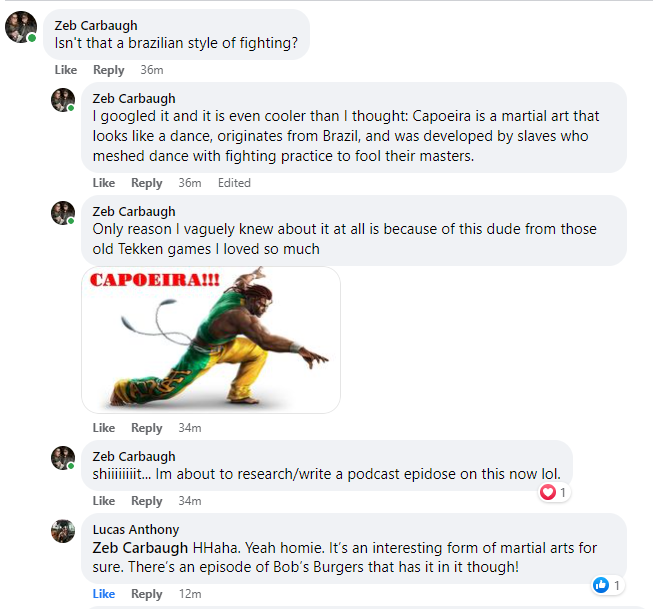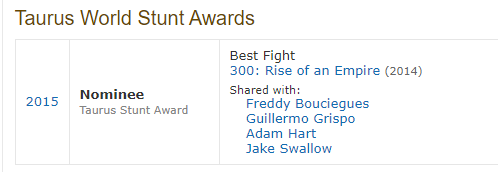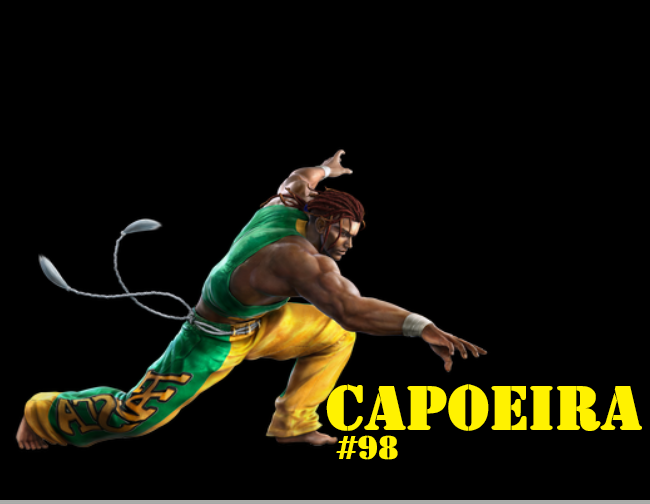The content below is from Episode 98 of the Who’d a Thunk It? Podcast
RECOMMENDATION SEGMENT
- REACHER
- I like to listen to audio books on occasion and the past year I listed to 2 of the Jack Reacher books written by Lee Childs.
- I had seen the 2 Tom Cruise movies that came out featuring Reacher as the main protagonist and thought the books might be fun.
- To my surprise the books were even more enjoyable, but I did notice something was off. While I listed to the novels I was picturing 5’7″ Tom Cruise until the books described Reacher as 6’5″ and around 250 pounds. It was annoying, but necessary to recreate my mental image of the character because it made the books more enjoyable.
- But then I saw a trailer for Amazon Prime’s new series simply titled “REACHER.” Seeing Alan Ritchson was playing the part was a delight.
- The great Thad Castle is perfect for the role. He is 6’2″ and his biceps are the size of basketballs. He is built like a truck.
- I’m almost finished with the 8th and final episode of the first season. The show did not disappoint. So check it out!
NOW FOR THE MAIN EVENT
- A friend from college recently posted a meme that said “when you play a fighting game, but don’t know the controls.” The meme was a video of a guy who was seemingly dancing around a caged octagon.
- I recognized the movements from a video game franchise I used to play as a kid called Tekken. I remembered there was a character that used a similar style of fighting. A quick google search revealed the character’s name is Eddy Gordo.
- The character is a Brazilian capoeira fighter. Eddy made his debut in the arcade version of Tekken 3 in 1997 and his first console appearance was in the 1998 PlayStation port of the title.
- I did remember the character was (or is) Brazilian. I’m not entirely sure if the Tekken series is still active.
- I recognized the movements from a video game franchise I used to play as a kid called Tekken. I remembered there was a character that used a similar style of fighting. A quick google search revealed the character’s name is Eddy Gordo.

- So This week’s episode dives in to the unique form of martial arts known as Capoeira.
- Encyclopedia Brittannica definition:
- capoeira, dancelike martial art of Brazil, performed to the accompaniment of call-and-response choral singing and percussive instrumental music. It is most strongly associated with the country’s northeastern region.
- Encyclopedia Brittannica definition:
- The basic aesthetic elements of capoeira were brought to Brazil by enslaved people, primarily from west and west-central Africa.
- Between 1500 and 1815, Brazil was a colony of the Portuguese Crown—an empire sustained by slave labor. The business of capturing and selling humans brought enormous wealth to the Portuguese Crown, but it brought huge numbers of enslaved Africans to the New World. Hundreds of people were packed into overcrowded, infected holds of slave ships in order to maximize profit. As a result of the perilous and unhealthy conditions during the three-month journey, more than half of the enslaved lost their lives, their limp bodies tossed overboard.
- Upon arrival, they were sold at the Sunday market and sent to work in the hot, humid and harsh conditions of the plantations, where many would be worked to death. The high mortality rates among the enslaved populations in Brazil, along with an increased demand for Brazilian raw materials like sugar, gold and diamonds, spurred the importation of growing numbers of Africans. An estimated four million enslaved people were shipped to Brazil until the mid-19th century.
- The enslaved resisted in various forms: armed revolt, poisoning their owners, abortion and escape. The vastness of the Brazilian inlands made it possible for individuals on the run to hide. Some escaped and formed clandestine communities in the backlands of the rainforest, independent villages known as quilombos. Here, the Africans and their descendants developed an autonomous socio-cultural system in which they could sustain various expressions of African culture. Historians surmise that capoeira emerged from these communities as a means for defense under the oppressive Portuguese regime.
- So you had these west and west-central African people coming to Brazil by force and despite how badly they were treated and oppressed, they brought their culutre with them. The west-African elements of culture were recombined and reinterpreted within the diverse enslaved community of Brazil to create a unique means of self defense, both driven and disguised—as merely a dance—by its musical accompaniment.
- By the mid-1800s, the towns and cities of Brazil experienced an unprecedented urbanization. Cities grew in population but lacked adequate economic planning and infrastructure, resulting in a growing population of vagrants. The Paraguayan War between 1864 and 1870 brought a flood of veterans and refugees from destroyed quilombos into the cities. These people were attracted to capoeira not only for its sport and play but also for its powerful means of attack and defense for their survival.
- And then in 1888, Slavery was abolished in Brazil, but capoeira continued to flourish within the Afro-Brazilian population, particularly in the northeastern state of Bahia. The government, however, recognizing the physical and spiritual potency of the art form and considering it a threat to society, continued to outlaw the practice until the early 20th century.
- Capoeira became a widespread practice at the beginning of the 20th century—outlaws, bodyguards and mercenaries used it. Even some politicians practiced as a way to sway constituents. In this time, strong social pressure throughout the country slowly transformed capoeira into a less aggressive weekend pastime. Eventually capoeiristas were meeting in front of bars, playing an apparently inoffensive kind of dance accompanied by berimbaus.
- The oppression of capoeira diminished significantly during the 1930s. During this time, a particular mestre—or master—had been working toward restoring the dignity and historical perspective of the capoeira of his time. Mestre Bimba was born in 1899 in Bahia, in northwestern Brazil. In 1932 he became the first master to open a formal capoeira school called Luta Regional. By 1937, the school received official recognition by the government. The course of capoeira had changed.
- Mestre Bimba established a disciplined method of teaching and legitimized capoeira as a form of self-defense and athletics. He developed a style called capoeira regional, which emphasized the technicality of movements and a dance-like nature. When he was summoned by the government to perform in front of distinguished guests, Mestre Bimba became the first to publicly present capoeira as an official cultural practice.
- In 1972, the Brazilian government recognized capoeira as on official sport. The regulations laid down rules, definitions, bylaws, a code of ethics, recognized movements and a graded classification chart for students. It also established rhythms for the music and guidelines for the role of the berimbaus during competition.
- This institutionalization and systemization of capoeira did not sit well with many mestres. They were opposed to such formalizing efforts, which they saw as an attempt to remove the art from its more organic, grassroots environment. Despite their opposition, capoeira was already engaged in a tremendous process of adapting to a changing society.
- When I read about this systemization of the capoeira I immediately drew a comparison to Yoga. Yoga started out as a small part of very complex religious practice but when it became westernized it is simply a type of workout routine.
- I think this is what the mestres feared would happen to capoeira.
- Now Capoeira is best described not as a dance but as a sport in which the participants—historically, sometimes with blades strapped to their ankles or held between their toes—swing their legs high in attack, perform aerial somersaults, and pass within a hairsbreadth of each other’s knees, head, groin, or stomach.
- Flexibility, stamina, rapidity of movement, and malicia (deception) are more important than sheer muscular strength. Although marked by the use of graceful, fluid, and often acrobatic movements as a means to escape rather than block an attack, the “game” of capoeira, as it is called by its practitioners, can nonetheless be lethal when contact is actually made with a well-timed, well-placed blow.
- In current practice, two opponents face each other within the roda—a circle of capoeiristas (practitioners of capoeira)—emulating in a stylized manner the strikes and parries of combat, in time with the rhythms of a small musical ensemble. Music is indeed integral to the practice of capoeira. The ensemble typically consists of one to three berimbaus (struck musical bows), one or two atabaques (single-headed, standing, conical drums), a pandeiro (tambourine), an agogô (double bell), and sometimes also a reco-reco (scraped bamboo tube), all of which accompany call-and-response songs, usually led by one of the berimbau players.
- Since about the 1930s in the state of Bahia and somewhat later in Rio de Janeiro, clubs have trained students in precise kicking, passing, and strategic deception. In the late 20th century capoeira began to gain an international following, and by the early 21st century active clubs existed in many cities throughout the world. Moreover, the art has gained many highly skilled female practitioners, though in its early years capoeira was an exclusively male domain.

- As I was looking in to this martial art I kept coming across video after video of this guy Lateef Crowder performing capoeira in various movies including the live action movie Tekken where he played Eddy Gordo.
- After doing some digging on his IMDB page I realize Mr. Crowder has one of the most impressive modern list of stunt credits I have ever seen.
- Crowder has credits on everything from multiple Call of Duty motion capture stunts to acting credit on a Twilight movie.
- My thought is that yes he is talented, but the martial art he has been practicing since he was 6 years old (capoeira) is such a spectacular sport to watch. In addition to requiring incredible amounts of body control and strength, it probably caught the attention of every talent scout he came across.
- The accolades this guy has under his belt are insane including a Primetime Emmy and Screen Actors Guild Awards.









- So I just wanted to give Lateef Crowder a shout out as he is the most popular practitioner of capoeira, at least in the states.
CREDIT
- https://www.britannica.com/sports/capoeira
- https://www.smithsonianmag.com/smithsonian-institution/capoeira-occult-martial-art-international-dance-180964924/
- https://www.imdb.com/name/nm1956628/

